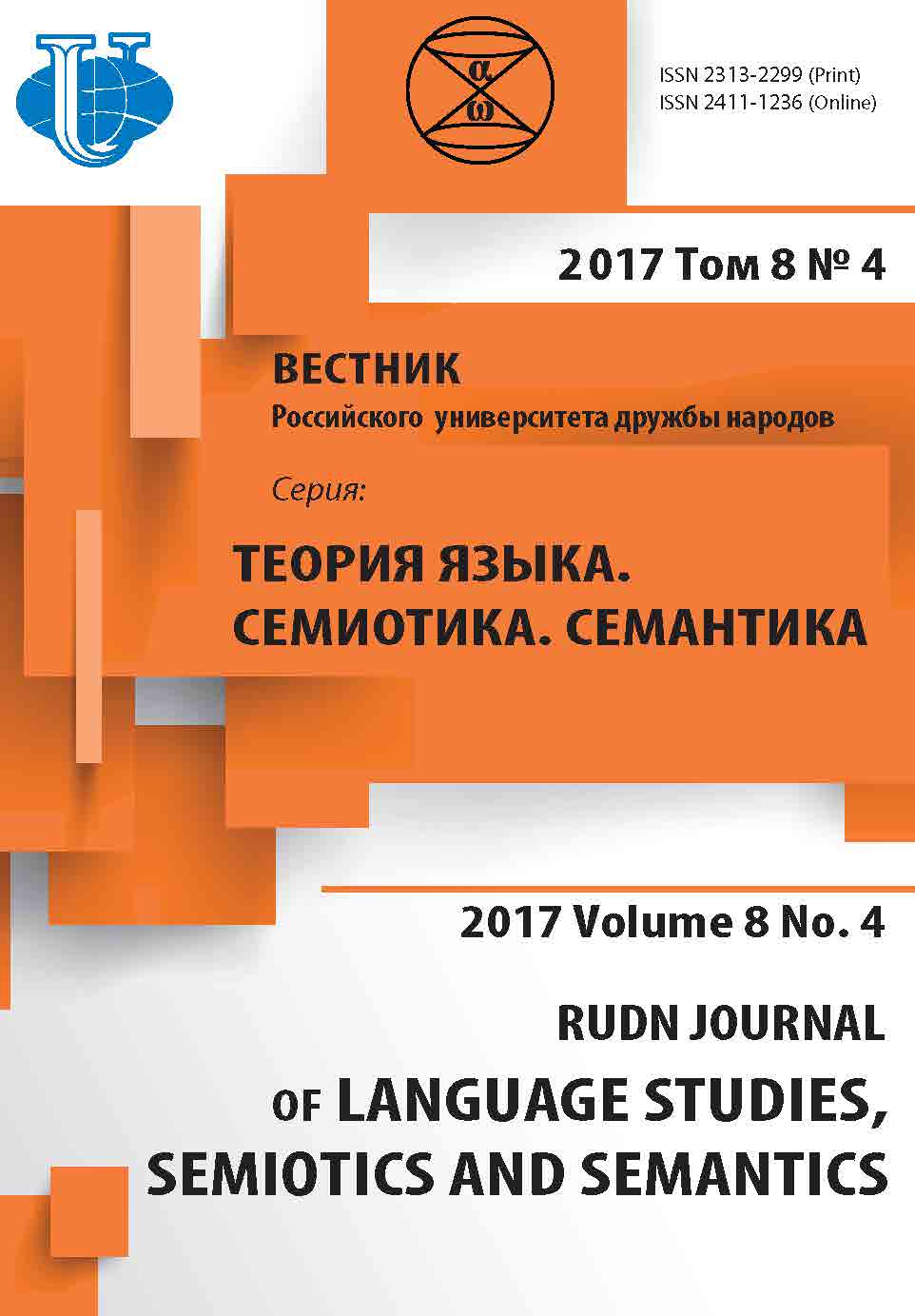ROLE OF EXTRALINGUISTIC FACTORS IN THE FORMATION OF LANGUAGE PERSONALITY OF BILINGUAL CHILD
- Authors: Kytina VV1
-
Affiliations:
- RUDN University
- Issue: Vol 8, No 4 (2017)
- Pages: 949-956
- Section: ARTICLES
- URL: https://journals.rudn.ru/semiotics-semantics/article/view/17973
- DOI: https://doi.org/10.22363/2313-2299-2017-8-4-949-956
- ID: 17973
Cite item
Full Text
Abstract
This article describes the influence of extralinguistic factors on the formation of linguistic identity of bilingual child. The problem of multilingualism is determined by extralinguistic factors, indicating that modern society and the processes occurring in it are forcing people to change their lives, and with it language. The relevance of the study determined that polylingual in the world than monolingual. And the children’s bilingualism is characteristic for half of the population on our planet. The phenomenon of multilingualism is not a given, and the need for continued development taken first by parents and caregivers, the teachers, and then by the children. We do not choose if the child will be bilingual, and he forced to become bilingual due to differences in family language, environment, and relation to a specific life situation. A bilingual child is a member of several societies, more ethnosociology (because the society that surrounds the baby carrier one national picture of the world, and the family is the bearer of another national pic-ture of the world). It is the tandem of parents and teachers is a point of support for the polylingual child. In this process, form a view about the world around himself and about the features of every ethnic group and about his belonging them. We can assume that we are talking about the formation of such concepts as “man of peace”.
About the authors
V V Kytina
RUDN University
Author for correspondence.
Email: kytinavictoria@mail.ru
Kytina Victoria Victorovna is a candidate for a degree at Russian language and its teaching Department, Faculty of Philology, RUDN University; Scientific Interests: polilingualism, child`s bilingualism, linguistic identity, the first language acquisition
6, Miklukho-Maklaya str , Moscow, Russia, 117198References
- Weinreich, W. (1979). Language contacts. Kiev. (In Russ.)
- Guboglo, M.N. (2003). Identification of identity: ethno-sociological essays. Moscow: Nauka. (In Russ.)
- Desheriyev, Y.D. (1972). Key aspects of the study of bilingualism and multilingualism. In Problems of bilingualism and multilingualism (Ed. P.A. Azimov). Moscow: Nauka. (In Russ.)
- Kudryavtseva, E.L. & Volkova, T.V. (2014). Integrated approach to language teaching (as a nonnative and another native) to bilingual children (ages 1 year — 6 years) in educational institutions with ethno-cultural component of the EU countries. URL.: https://roditeljam.lv/wp-content/ uploads/2014/06/Bilium2elektr-1.pdf (accessed: 30.8.2017). (In Russ.)
- Zeitlin, S.N., Kircheva, G.N. & Kuzmina, T.V. (2015). The development of the language the child in a situation of bilingualism. Moscow: Zlatoust. (In Russ.)
- Chulkina, N.L. & Karaulov, Yu.N. (2008). Guard. Russian linguistic personality: an Integrative perspective in terms of intercultural communication. Moscow: RUDN University. (In Russ.)
- Shaklein, V.M. & Ryzhova, N.V. (2008). Modern methods of teaching Russian to non-Russians. Moscow: RUDN University. (In Russ.)
- Shcherba, L.V. (1974) On the concept of mixing languages. Leningrad: Nauka. (In Russ.)
Supplementary files












